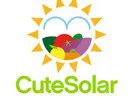Around half of German consumers are increasingly demanding transparency with regard to the origin and production conditions of their food. This is the result of the current nutrition report of the Federal Ministry of Food and Agriculture (BMEL). As part of the promotional campaign "CuteSolar - Cultivating the Taste of Europe in Solar Greenhouses," southern Spanish producers are informing consumers about the growing conditions and the benefits of this model for environmental and social sustainability. Thanks to detailed traceability systems, all production and quality control processes of the fresh fruits and vegetables are documented and archived in different digital codes and barcodes and integrated into the labels. In this way, it is possible to trace every process that the fruit and vegetables have gone through, from sowing to sale on retailers' shelves.
Looking at surveys conducted by the poll institute forsa - on behalf of the German Federal Ministry of Food and Agriculture (BMEL) - it is clear that consumers increasingly expect information about the origin of their products. While 46% of respondents expected this transparency last year, the figure has risen to 50% this year. In short, consumers want to know what is in their food, where it comes from and under what conditions it was produced. The CuteSolar campaign aims to provide them with this transparency in relation to the solar greenhouses in southern Spain. This way, consumers can understand in detail how their fruits and vegetables are cultivated in the solar greenhouses, what individual stages of development they go through in the process, and what impact they have on social and environmental sustainability.
The control and recording of data is always present in the important stages of the cultivation process of fruits and vegetables in the solar greenhouses of southern Spain. All data about the cultivation activities are stored in the field books and included in the traceability system.
The first step is the germination of the seeds in the nurseries. They are sown in small seedbeds under special conditions (temperature, humidity and darkness). After germination, the seedlings undergo a hardening-off process to prepare them for transplanting into greenhouse soil. After transplanting into the solar greenhouses, the plants are watered, fertilized and given ideal environmental conditions to grow healthy and strong. After planting, growers release up to 30 million harmless insects and arachnids on the plants and/or host plants for biological control. These include small spiders, bugs, lacewings, wasps and even beetles that keep pest populations in balance. After flowering and fruit set, the fruits remain on the plant until they are ripe.
Throughout the growing process, farms are subject to strict quality and food safety controls to ensure that only the best produce reaches the consumer. Finally, after harvesting, farmers transport the fruit to packing warehouses. After further quality and food safety checks, the products are sorted, packed, labeled and shipped to various retailers with traceability codes.
"Our products go through a large number of production steps from seed to the consumer's plate, which are recorded in our traceability system. This allows us to offer complete transparency in terms of product quality and to meet the high food safety standards that characterize products from European solar greenhouses. We are pleased to be able to meet the expectations of European consumers in this regard with absolute clarity," Francisco Góngora, President of Hortiespaña, affirms.
In addition to the cultivation processes described above, there are other critical operations that have a strong impact on the sustainability of the entire model. For example, once cultivation is complete, plant residues are either incorporated into the soil or taken to composting facilities. In most cases, the natural process of solarization is used to disinfect the soil - using a thin plastic cover, abundant irrigation, and exposure to sunlight to generate high-temperature steam that kills harmful organisms. In addition, farmers inspect plastic covers, sidewalls, support wires, aeration structures, irrigation drip heads and heads, and machinery, repairing or replacing those as needed. Discarded materials are taken to recycling facilities to give them a second life.
What is a solar greenhouse?
A solar greenhouse is an enclosed structure covered with a plastic sheet through which the sun's rays shine, giving plants the light they need to maintain the right temperature to develop during the winter months so they can photosynthesize. In the process, plants produce nutrients from the CO2 they absorb from the air and release enormous amounts of oxygen into the atmosphere. Solar greenhouses are very different from the production methods of other greenhouses, which use fossil fuel-based heating and lighting systems that consume up to 30% more energy, thus polluting the environment.
About CuteSolar
CuteSolar: Cultivating the Taste of Europe in Solar Greenhouses is a program promoted by APROA, the Association of Producer Organizations of Fruit and Vegetables in Andalusia, HORTIESPAÑA, the Spanish Interprofessional Organization of Fruit and Vegetables, and FruitVegetableEUROPA (EUCOFEL), European Federation of Fruit and Vegetables, with the aim of informing European consumers about the specificities of agricultural production methods in solar greenhouses. In particular, it focuses on key aspects such as sustainability and environmental impact, as well as safety, quality and traceability of products.
The program, with a total investment of EUR 1.95 million, is co-funded by the proposing organizations and the European Union, will run for three years (2020-2022) and will be implemented in Spain, Germany and Belgium.
 For more information:
For more information:
Cute Solar
www.cutesolar.es
